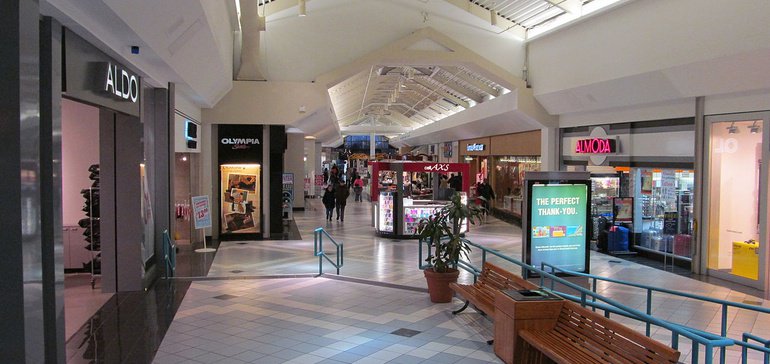Dive Brief:
- Second quarter mall rents fell 4.6% from the first quarter and 7.1% year over year, hit by major store closures from Toys R Us, Sears and J.C. Penney, according to a trend report from commercial real estate firm JLL. Mall vacancy rates hit 4% during the period, JLL said.
- In Q2, the retail sector suffered its worst quarter in nine years with net absorption of negative 3.8 million square feet, which pushed the regional mall vacancy rate up by 0.2% to 8.6% as the average mall rent increased 0.3%, according to another report from commercial real estate firm Reis emailed to Retail Dive.
- Retail consolidation will continue to make headlines in 2018, but regional mall defaults are unlikely to reach the levels seen last year, according to Morningstar Credit Ratings, LLC data emailed to Retail Dive.
Dive Insight:
With the demise of Toys R Us increasingly in the rear view, the worst for various types of shopping centers is likely over for the time being.
“The Toys R Us store closings impacted the second quarter statistics more than any other retailer has in any quarter over the last nine years,” according to the Reis report, which noted more than 80 Toys R Us store closures in more than 40 areas in the quarter. “That said, we believe most of the Toys R Us stores are now closed and that most of the negative net absorption is behind us. Although we do not expect the vacancy rate to improve in the near future, it will not increase that much more in the coming quarters.”
The trends are being buffeted not just by the struggles of major retailers like the toy seller and others, but also by shifts in the retail industry and a correction of too many stores opened decades ago, experts say.
“Enthusiastic overbuilding in pre-recession years led to a glut of retail locations in certain areas. U.S. [gross leasable area] per capita — at 23.6 square feet — is more than twice as high as Australia’s (11.2 square feet per capita), the runnerup country,” JLL said in its report. “Fortunately, developers have pulled hard on the construction reins and current development activity is still much lower than it was prior to the Great Recession.”
Malls were first disrupted by big box retail, which anchored “power centers,” where most Toys R Us locations were found, according to retail analyst Nick Egelanian, president of retail development consulting firm SiteWorks.
Mall vacancy rates in the second quarter reached 4.7%, though rents are rising overall, 1.6% from the first quarter and 2.6% year over year, according to JLL. When it comes to malls, upscale centers in thriving areas aren’t feeling the declines seen elsewhere. Moreover, plenty of shopping centers are filling vacancies with non-department store tenants, including off-price retailers and businesses like fitness centers, JLL found.
Researchers at Reis called their finding of rising rents “odd,” and both JLL and Reis noted that retail development has slowed. “We expect any new completions will be few and far between and could get offset by conversions or demolitions,” Reis said.

